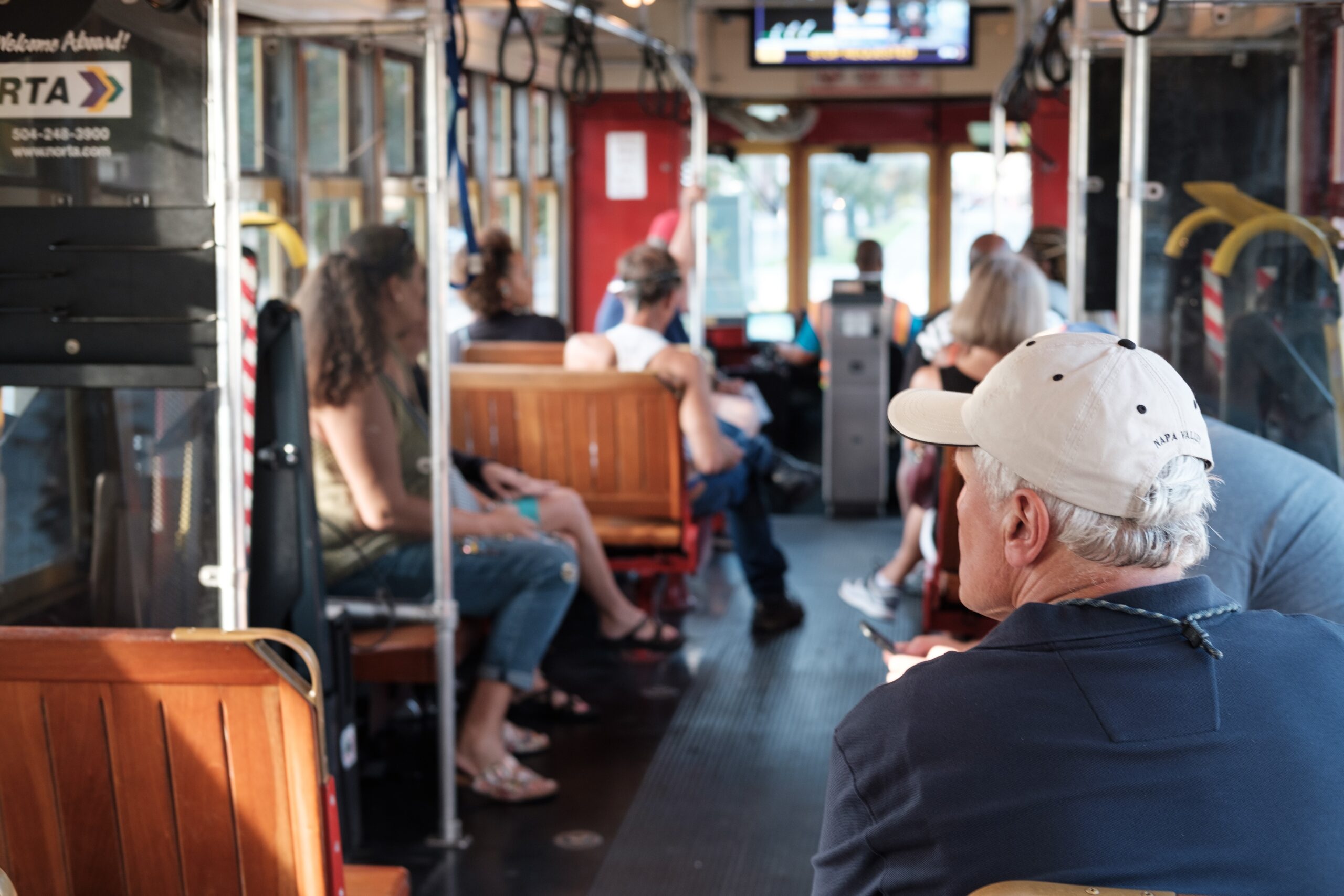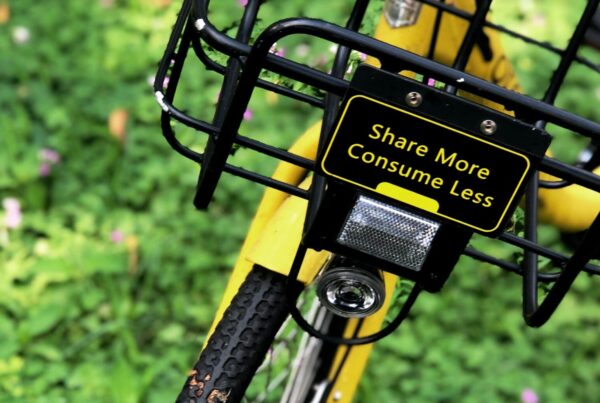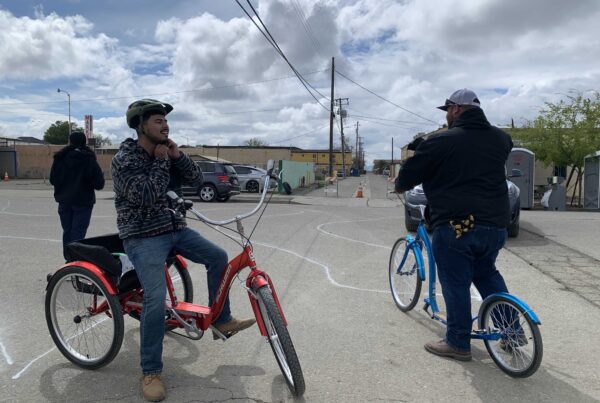Digital technologies are often presented as the solution to problems in transportation. It can automate systems, improve access, provide better information, organize data, and increase overall efficiency. While these are important benefits to incorporating technology to streamline and integrate transit systems, transportation’s ultimate goal is to serve people.
Transportation is tied closely to the quality of life for a community. It can facilitate human connection, community building, and a unique customer experience for the rider. Transportation and digital technologies can work together to improve transportation services while also improving the quality of life for riders.
In this entry, SUMC’s staff draw on their experience providing technical assistance and conducting community engagement for small transportation organizations and reflect on the delicate balance of using technology while also prioritizing the customer and their community.
Transit agencies of all sizes can draw from these insights, but they are geared more towards smaller transportation organizations looking to introduce on-demand service.
SUMC’s Observations
1. The Social Life of Transportation is Difficult to Capture With Technology Alone
Technology can be used to optimize the use of vehicles in a fleet, generate the most efficient routes, and streamline payment methods. However, technology cannot always capture data about the social life of transportation that can be a large part of the rider experience and overridden by route efficiency.
Here are some scenarios in which technology does not account for unique human needs.
There may be a group of young students who use the school’s shuttle service and look forward to the time and space socializing in the shuttle. However, if technology is being used to prioritize the most efficient routes and deploy the most efficient fleets, these students can’t count on riding with their friends or seeing the same driver for each trip.
A small arrival time window is considered helpful because it lets riders know when they need to be at the pick-up location, but it also puts a lot of pressure on riders, drivers, and the software to be at the pick-up location on time so that there isn’t a backlog of late arrivals for other riders. This is an especially important consideration for persons with disabilities or older adults who may need varying amounts of time and assistance onboarding and offboarding vehicles.

Photo by Jennifer Uppendahl on Unsplash

Photo by Steven HWG on Unsplash
2. Dynamism of Human Beings Challenge Technology
Customers may use technology as the tech is intended to operate, but sometimes, they may have last minute changes or needs. People are dynamic by nature, and needs can change at the last minute. In these instances, the driver and the support team may be better equipped to resolve issues quickly instead of an automated service.
For example, a person with a disability who relies on paratransit services may have a quick errand to run at the pharmacy, and might request the driver to wait in the parking lot for 5 minutes. While technology might process this as inefficient, the transportation provider might want to prioritize this level of care and customer experience.
3. People Bond With Other People, Not With Technology
Many customers appreciate a great web based platform or mobile app that brings convenience to their lives. For example, a transit rider might open up an app to book and pay for their ride quickly and on their own. While this is desirable to some, some riders may not be familiar with using an app or prefer speaking to someone who suggests a personalized transit solution for them. Direct communication with another human being can create a space of trust, shared experience and understanding, and ultimately, a better customer service. The empathy, trust, and strong relationships built from this within a community can be an important component of a transportation operation.
Considerations Before Procuring Technology Solutions
1. Know Your Values
Each transportation organization has goals and a set of values to guide decision making. Ask yourselves if the customer experience is a priority above all else. If so, which metrics are used to measure the customer experience? If providing a great customer experience isn’t a part of a transportation organization’s values, ask yourselves if you want it to be.
This may impact decisions on how technology is currently being used or how it could be used in the future.
2. Work Closely With the Technology Provider From the Beginning
Each community is unique and transportation providers know their communities’ needs better than the technology provider. Therefore, work with your technology provider and advocate for custom changes to technology, when possible, that address a community’s pain points.
For example, explore whether ridership data from a community can be analyzed to generate a unique average wait time that can be used in technology solutions.
3. Pilot Technology Solution
By working closely with a technology provider and the community, there is a good opportunity to pilot the software using a small focus group as opposed to going live with a hard launch. This gives the software provider and the transportation experts relevant data to iterate the product and make it better before making it available to the public.
While piloting a technology service, create a process to generate feedback from riders to make sure the mobility service is best meeting their needs.
4. Evaluate Ridership Data
Ridership data can help make informed decisions about the transit service such as zone boundaries. Mobility on-demand technology helps an agency make data driven solutions while complementing the human element.
5. Invest in Reliable Technology
As transportation continues to leverage technology as a solution, it’s important to note that not all smart phones, tablets, laptops, card readers, and networks are created equal. Technology providers in the market work to develop products that offer speed, ease, and reliability. While good technology products come at a cost, it’s often worth the upfront investment for a smoother rider experience.
6. Have Drivers Provide Regular Feedback on Technology Solution
Drivers are often the public faces of a transportation service, and they may have many observations or insights into how technology helps or does not help provide a better customer experience.
Transportation organizations may want to formalize feedback from drivers about specific technology solutions to iterate and make improvements to these technologies or include them in the RFP process from the beginning.
7. Good Partnerships Can Help Provide A Better Transit Service
To help fill transportation gaps and better serve people who live outside of a transportation service area or to provide services based on cognitive or physical need, consider partnering with other mobility services, such as a neighboring transit agency, ride hailing company, or local taxi provider to complement your mobility services.
The increasing use of technology in transportation to streamline services is an important and valuable evolution that provides numerous benefits.
However, it is important to remind ourselves that transportation services are for people.
Good transportation isn’t only about providing efficient transportation, good transportation is also about prioritizing the customer experience and building trust with riders, providing safe spaces, understanding needs and preferences, and being amenable to change.




